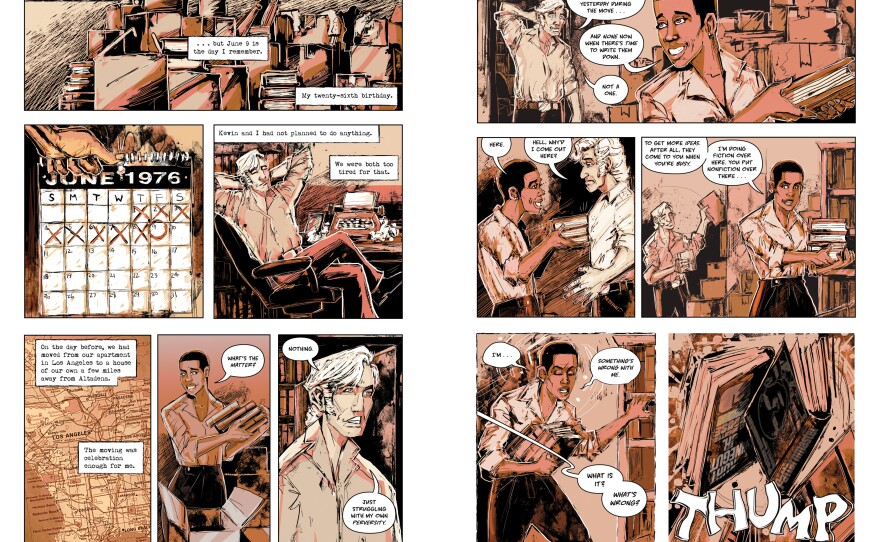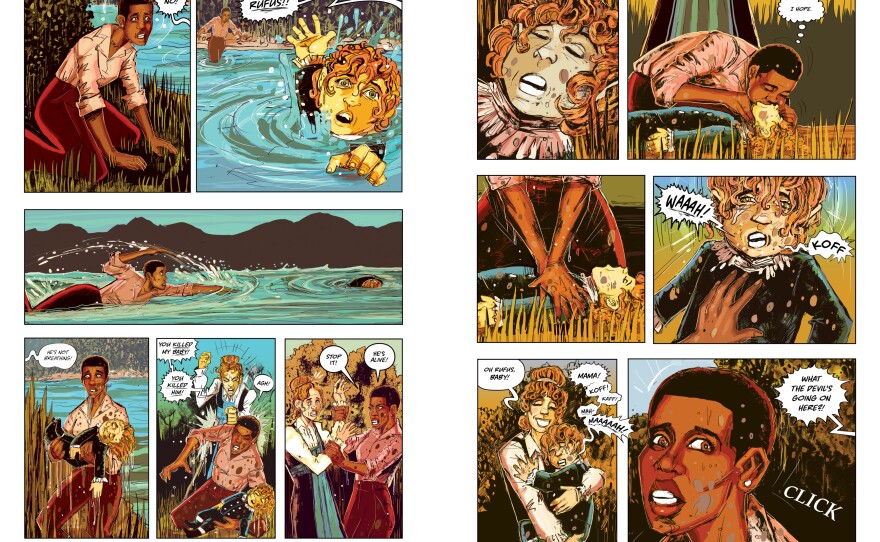Not surprisingly, artists Damian Duffy and John Jennings felt especially daunted by the chance to adapt renowned speculative-fiction writer Octavia Butler's beloved Kindred for a new graphic novel edition.
"It was like, this is awesome, we got this project, it's, like, our dream project! Yayyy!," Duffy said. But excitement quickly turned to panic. "I have to do what now?" he also said to himself.
"Octavia Butler is ... one of the greatest American writers to live, period," Jennings said. "She was literally a genius. The way that she would use metaphor and allegory and how she tackled some of the most horrific things about human existence through science fiction and fantasy? She was a master storyteller." Butler, who died in 2006 at the age of 58, was the first science-fiction writer to receive a MacArthur "Genius" grant and the recipient of several Hugo and Nebula awards.
"I think that Kindred, even though it was written in 1979, is still a very prescient and very important book, particularly if you look at the political landscape now in America," Jennings said. The novel tells the story of Dana, a black woman who time travels from 1976 to the antebellum South to rescue a white slave owner who turns out to be her ancestor. The novel tackles themes that, at the time, were almost taboo for anyone to write about, much less a black woman: raw and vivid depictions of slavery; the complex master-slave relationship; black heroines; interracial relationships, and the long-reaching effects of slavery on America.
"It actually resonates in a particular way now even more because of some of the obvious tensions around race, class, gender, spirituality that still exist in our country that have never been dealt with," Jennings said.
In 1993 Butler spoke to NPR about her acclaimed work. "When I wrote Kindred, which is unmistakably of special interest to black people, I had a lot of trouble. All of a sudden, 15 publishers couldn't find a place for it," she said. "They just had no idea how to sell it as what it was."
That's partly why Duffy and Jennings knew they had to get this right.
To get started, Duffy read the novel again four or five times, making notes with each reading, and doodles in the margins. "My first draft of the script I wrote super fast, I wrote it in like two and a half months or so because I felt like, alright, we got the contract, let's get moving," he said. But he admits it wasn't very good. When he sent it to their editor she "cut it to shreds."
After editing rounds to ensure the plot and main character arcs were in place, Jennings started illustrating the book, which Duffy would eventually letter.
To visually differentiate the time periods in which Butler set the story, Jennings used muted colors for the present and vibrant ones for the past. "In a sense, she was trying to state how slavery and the remnants of it and the relevance actually, too, are still with us today, and they still sit with us. Dana becomes really comfortable with being in that space and that's really disturbing," Jennings said.
Working through periods of sleep deprivation and extended time away from their families was a huge challenge for the two collaborators. "Overall, I think we did a good job of at least keeping enough of the back story that you would identify with those characters, that they were still complex and human in the way Butler wrote them," Duffy said.
Jennings said illustrated works of fiction are extremely powerful storytelling tools. "You want teens to young adults to pick up this book and say, 'Hey, this is really, really disturbing, and beautiful, and I want to know about this woman. I want to know more about this person and how she writes and why she was writing what she was writing,' " he said.
In its illustrated form, Kindred receives a new identity of sorts, while retaining all of the complexities, politics, and moral questions that propelled its author to literary icon status. And the nascent social upheaval of the last couple of years has likely rendered its potential audience more receptive to a work that is challenging and imaginative while remaining grounded in a personal quest for identity and survival.
Copyright 2023 NPR. To see more, visit https://www.npr.org. 9(MDAzMjM2NDYzMDEyMzc1Njk5NjAxNzY3OQ001))









